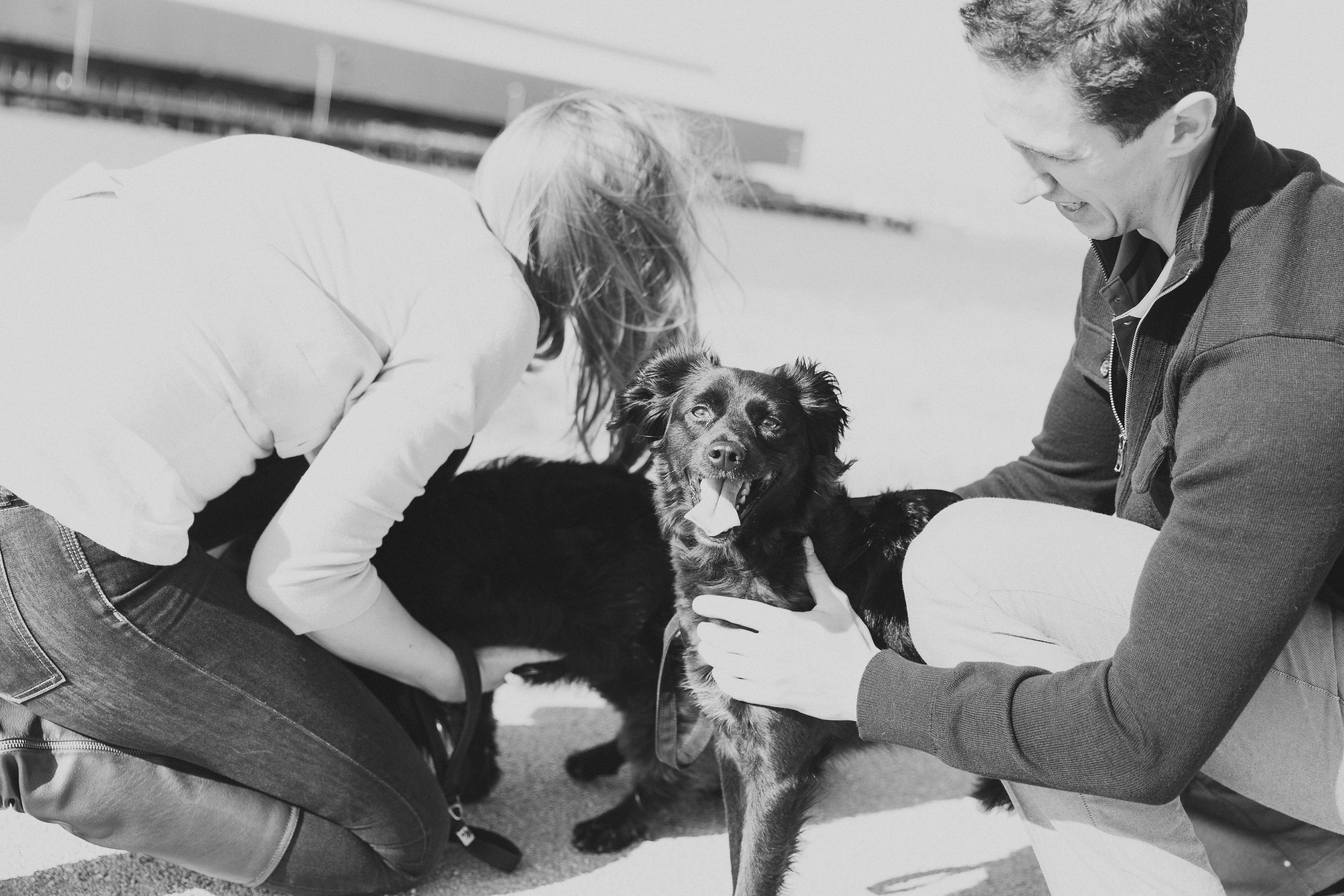Being able to comfortably handle your dog during an examination is also crucial to a successful, stress-free vet visit. From the time your dog comes home, handling should be a regularly practiced exercise. Take each of your dog’s feet and rub them, check inside their ears, lift their lips to look at their teeth, and run your hands along the entirety of their bodies. Practice each of these while rewarding them with food and/or praise when they remain calm through each manipulation. If there are areas your dog is more sensitive about, take very slow steps and increase their tolerance of contact in that particular space.
Making your dog comfortable with restraint is also important. Sometimes your dog will need to be contained in order to gives shots or check an injury, and making sure your dog doesn’t begin to flail when restrained can make the examination less stressful. Practice wrapping your arms around them and applying pressure, flipping them onto their side or back, and again, rewarding calm responses to these manipulations.
“…flipping them onto their side or back, and again, rewarding calm responses to these manipulations.”
Always be honest with your vet if there are certain things your dog is uncomfortable with having done to them. While we can take every precaution and implement as many positive training exercises as we can, there may be a situation that arises that causes your dog to respond in a new way. Spend time making sure your dog is tolerant of invasive handling and strangers is a great way to help make vet trips as stress-free as possible!

How do you handle your pup’s vet visits? Share below!
